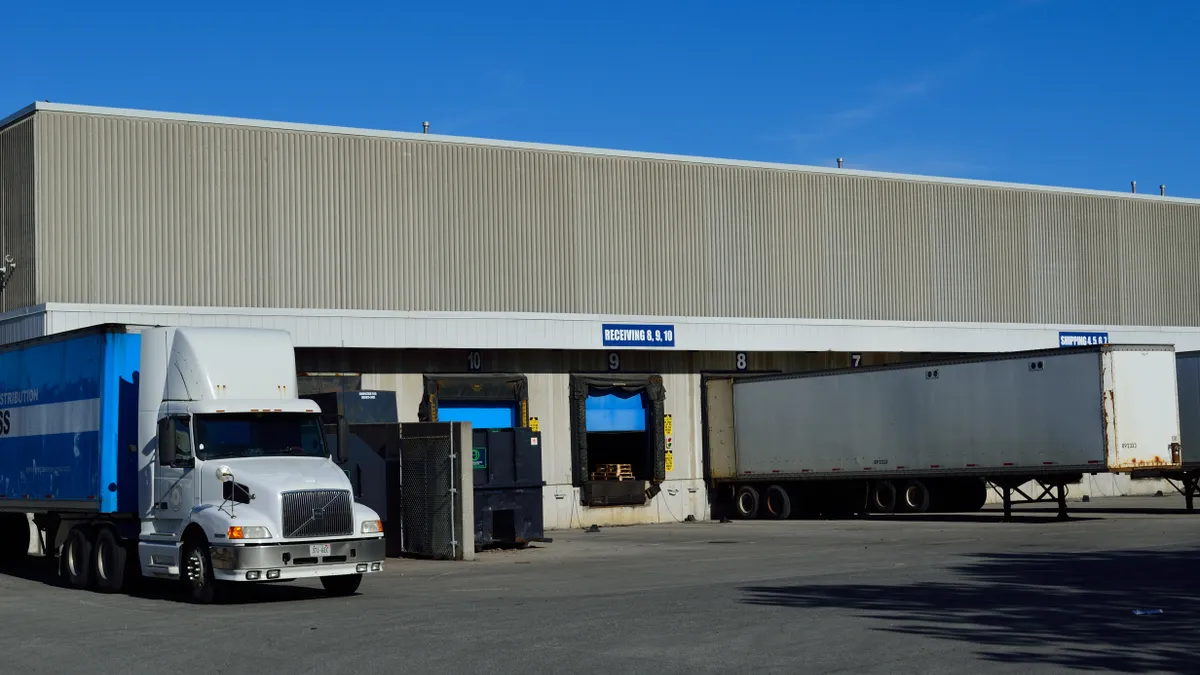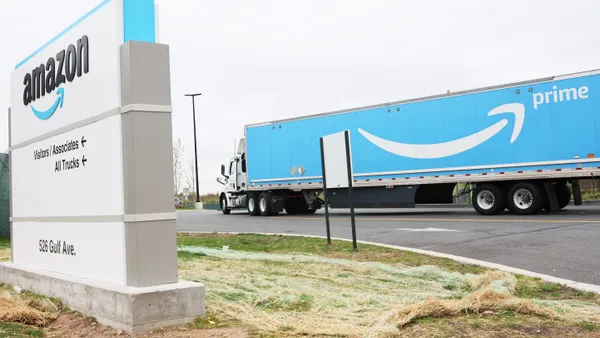Dive Brief:
- California's South Coast Air Quality Management District is proposing a rule — the Warehouse Actions and Investments to Reduce Emissions, or WAIRE, program — that would hold operators of large warehouses accountable for the use of zero- or net-zero-emissions trucks at their facilities, even if they don't own a truck fleet.
- WAIRE is a points system to encourage environmentally friendly practices. Large warehouses would be required to accrue a certain number of points, based on annual truck trips to and from that facility. Points could be earned through emissions-curbing actions, or the warehouse could instead pay a fee.
- The proposal applies to owners and operators of facilities with at least 100,000 square feet of indoor space in a single building that may be used for warehousing by one or more operators, within the agency's jurisdiction. South Coast AQMD expects its governing board will consider the proposed rule in April, a spokesperson confirmed via email.
Dive Insight:
Road transport has been at the forefront of Southern California's emissions crackdown.
"South Coast AQMD has limited authority over mobile sources, which account for over 80% of the smog-forming emissions in our region, with heavy-duty trucks being the largest contributor," the agency spokesperson said. The board directed the South Coast AQMD to develop a rule to address heavy-duty emissions in May 2018, resulting in WAIRE.
The program complements other zero-emissions trucking rules in California, particularly the California Air Resources Board's Advanced Clean Trucks Regulation, passed in June 2020. That rule requires truck OEMs to sell an increasing percentage of zero-emission trucks in California between 2024 and 2035.
Transport is responsible for a large portion of emissions, but it's also one of the most challenging areas for supply chains to curb, because it involves external parties.
Industry stakeholders' concerns about getting third parties on board "have shaped the rule including the need for flexibility and potential costs of the rule," the spokesperson wrote.
To add flexibility, the agency included a "menu" of ways warehouses can earn WAIRE points.
A warehouse that owns a truck fleet could earn 126 WAIRE points by acquiring at least one zero-emissions (or net-zero-emissions) Class 8 truck. It could also earn 51 points for a certain annual number of truck trips taken to and from its facility by those trucks, even if the truck belongs to another party. Different points are awarded for different truck classes, and the warehouse would be responsible for tracking all truck trips.
WAIRE points would also be available for onsite measures. For example, a warehouse could earn nine points by beginning construction on the installation of charging infrastructure, or 42 points for using an onsite vehicle-charging system.
Additionally, warehouse operators would be given the option to develop a custom plan to earn points. Or they could choose to pay a "mitigation fee" to buy points instead of earning them through the menu of options. That fee would be $1,000 per point.
"To address potential costs, the WAIRE menu is designed to allow early investments to continue earning points in the future, and the rule will allow fleets to use government funding programs to offset the purchase price of cleaner vehicles," according to the spokesperson.
The state government has doled out funds to jumpstart the use of green trucks. Last year, South Coast AQMD gave a $1.7 million grant to Volvo Trucks North America, and the California Energy Commission awarded nearly $116 million to expand hydrogen refueling systems.
Should the proposal be implemented in its current form, the largest warehouses (those with 250,000 or more square feet) would have to begin reporting for the program Aug. 2, 2022. Those with between 150,000 and 250,000 square feet would begin Aug. 1, 2023. And those with between 100,000 and 150,000 square feet would begin July 31, 2024.













